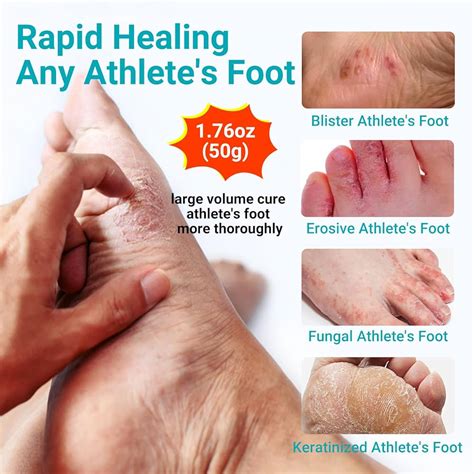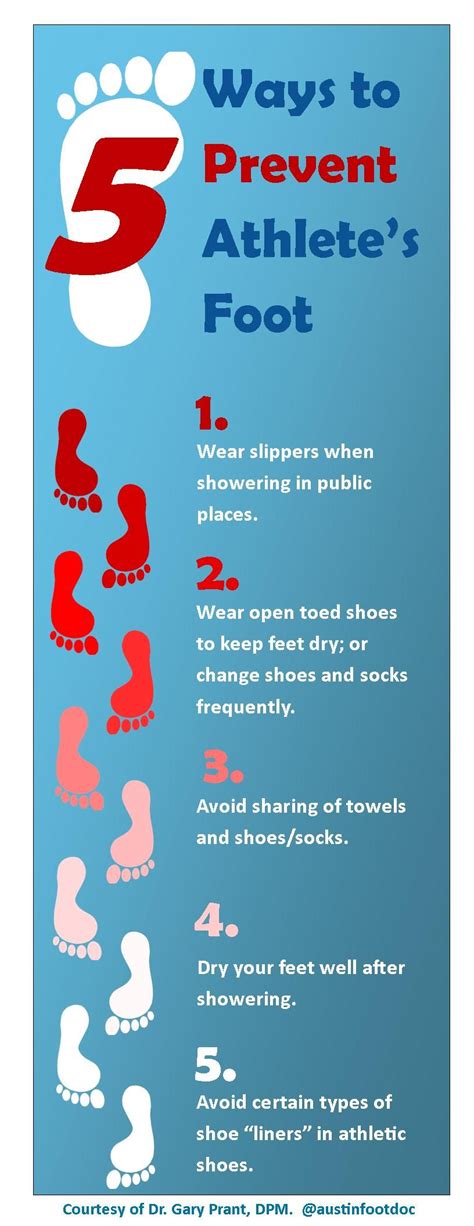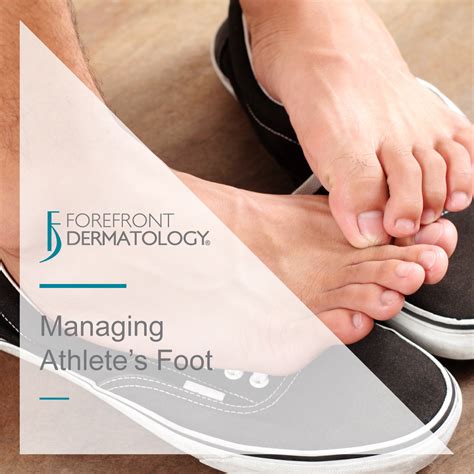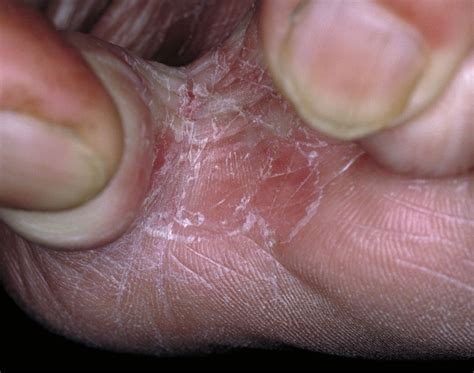Intro
Athlete's foot, also known as tinea pedis, is a common fungal infection that affects the feet. It is estimated that up to 70% of the population will experience athlete's foot at some point in their lives. The infection is caused by a type of fungus that thrives in warm, moist environments, making the feet an ideal breeding ground. Athlete's foot can be uncomfortable and embarrassing, but there are many effective treatments available to help manage the condition.
The symptoms of athlete's foot can vary from person to person, but common signs include itching, burning, and cracking of the skin on the feet. In severe cases, the infection can spread to other parts of the body, such as the hands, groin, and underarms. Athlete's foot is highly contagious and can be spread through direct contact with an infected person or by walking barefoot in areas where the fungus is present. Understanding the causes and symptoms of athlete's foot is essential in finding the right treatment and preventing future outbreaks.
Preventing athlete's foot is often easier than treating it, and there are several steps that can be taken to reduce the risk of infection. Keeping the feet clean and dry is essential, as is wearing breathable shoes and changing socks regularly. Using antifungal powders or sprays can also help to prevent the growth of fungus on the feet. However, for those who have already contracted athlete's foot, there are many effective treatments available. From over-the-counter creams and ointments to prescription medications and home remedies, there are many options to choose from. In this article, we will explore the different treatment options for athlete's foot and provide tips on how to prevent future outbreaks.
Athlete's Foot Fungus Treatment Options

Over-the-Counter Treatments
Over-the-counter treatments for athlete's foot are widely available and can be purchased at most pharmacies and supermarkets. These treatments typically come in the form of creams, ointments, or powders and contain ingredients such as clotrimazole, miconazole, or terbinafine. These ingredients work by killing the fungus that causes athlete's foot, reducing the symptoms and preventing the infection from spreading. When using over-the-counter treatments, it is essential to follow the instructions carefully and use the treatment for the full recommended period, even if the symptoms appear to have cleared up.Prescription Medications for Athlete's Foot

Home Remedies for Athlete's Foot
In addition to over-the-counter and prescription treatments, there are several home remedies that can help to manage the symptoms of athlete's foot. These remedies include tea tree oil, garlic, and vinegar, which have antifungal properties that can help to kill the fungus and reduce the symptoms. Other home remedies, such as keeping the feet clean and dry, wearing breathable shoes, and changing socks regularly, can help to prevent the infection from spreading and reduce the risk of future outbreaks.Preventing Athlete's Foot

Good Foot Hygiene
Good foot hygiene is essential in preventing athlete's foot. This includes washing the feet daily with soap and water, drying them thoroughly, especially between the toes, and trimming the toenails regularly. Wearing breathable shoes, such as those made from leather or mesh, can also help to keep the feet cool and dry, reducing the risk of infection.Tips for Managing Athlete's Foot

Avoiding Reinfection
Avoiding reinfection is essential in managing athlete's foot. This includes treating the infection fully, even if the symptoms appear to have cleared up, and taking steps to prevent future outbreaks. This can include keeping the feet clean and dry, wearing breathable shoes, and using antifungal powders or sprays.Athlete's Foot and Other Foot Conditions

Fungal Nail Infections
Fungal nail infections are a common foot condition that can be caused by the same fungus that causes athlete's foot. This infection can cause the nails to become thick, brittle, and discolored, and can be painful and embarrassing. Treating fungal nail infections typically requires prescription medication, and in some cases, surgical removal of the infected nail.Conclusion and Final Thoughts

We invite you to share your thoughts and experiences with athlete's foot in the comments section below. Have you tried any of the treatments or home remedies mentioned in this article? What worked best for you? By sharing your experiences, you can help others who may be struggling with this common condition.
What is athlete's foot?
+Athlete's foot is a common fungal infection that affects the feet. It is caused by a type of fungus that thrives in warm, moist environments, making the feet an ideal breeding ground.
How is athlete's foot treated?
+Athlete's foot can be treated with over-the-counter creams and ointments, prescription medications, and home remedies. The most effective treatment will depend on the severity of the infection and the individual's overall health.
How can I prevent athlete's foot?
+Preventing athlete's foot is often easier than treating it. Keeping the feet clean and dry, wearing breathable shoes, and using antifungal powders or sprays can help to reduce the risk of infection. Additionally, avoiding walking barefoot in areas where the fungus is present can help to prevent the infection from spreading.
Can athlete's foot be cured?
+Yes, athlete's foot can be cured with the right treatment and prevention. However, it is essential to follow the treatment instructions carefully and attend any follow-up appointments with a doctor to ensure the infection has fully cleared up.
Is athlete's foot contagious?
+Yes, athlete's foot is highly contagious and can be spread through direct contact with an infected person or by walking barefoot in areas where the fungus is present.
